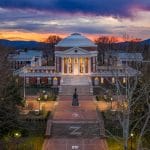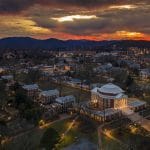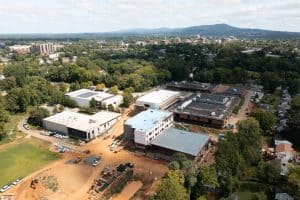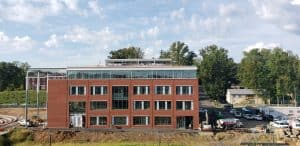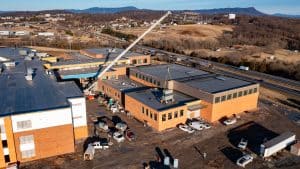University of Virginia – Rotunda
Highlights
The American Institute of Architects called Jefferson’s Rotunda, Lawn, and nearby home at Monticello “the proudest achievement of American Architecture in the past 200 years”. The new innovations are to restore the Rotunda as the center of the University’s academic activity. These innovations include expanding classroom space, increasing student access, and enhanced programing. RBI is proud to have been able to take part in the rehabilitation of such an important and treasured historical landmark in the United States.
The scope of work involved numerous challenges, alternate materials, and means and methods to put our work in place. Most of our installed duct and piping is buried under floors or encased in solid brick walls and finished over with plaster. The custom AHUs were built on-site by RBI from knock-down panels, with one AHU being located underground in a new mechanical vault, and the other located in the Portico above the terrace, requiring the unit pieces to be hoisted with a winch approximately 30 feet up through an opening for the mechanical space. BIM modeling was utilized with the aid of 3D scanning to coordinate the MEP trades in the tight utility spaces. RBI managed the BIM Model and coordination effort in-house and was also tasked with providing temporary conditioning throughout the entire project. Every aspect of our work on this project required far more detail than typically required and was unique to the Rotunda due to its shape and the available space for our work to be installed. Thomas Jefferson did not envision ducts and pipes for plumbing and HVAC when he built the Rotunda of solid brick with no voids or chases between rooms, however with the use of BIM modeling, RBI was able to envision and provide solutions to assist the project designers during rehabilitation.

